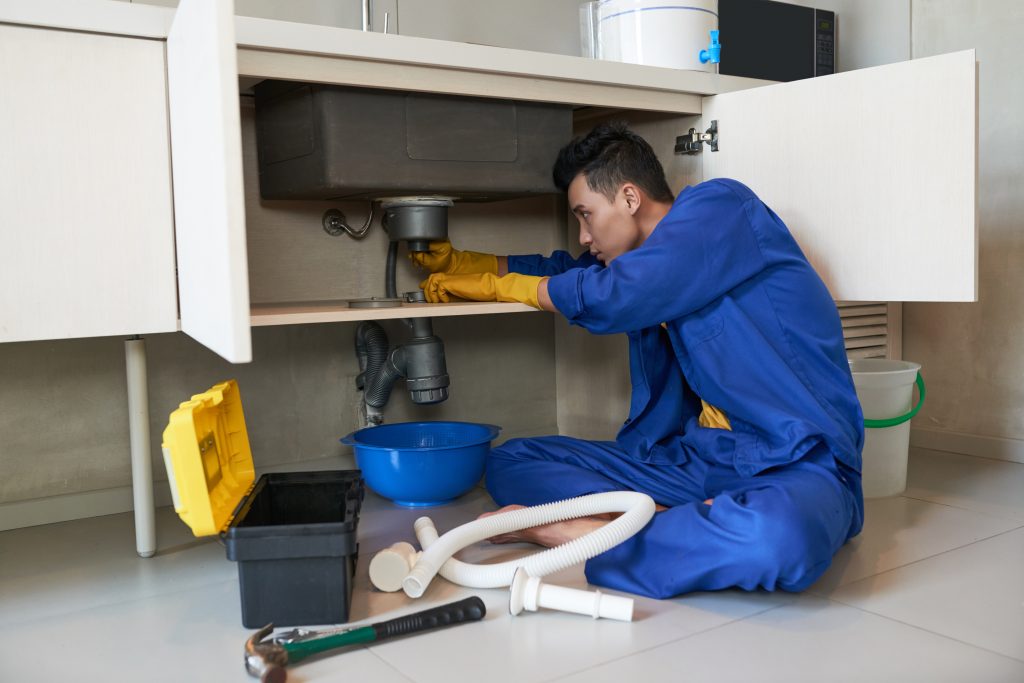Water leaks may start as a small inconvenience, but they rarely stay that way. A dripping pipe behind a wall, under a sink, or in a basement creates the perfect environment for mold to take root. Once spores begin to spread, the damage escalates from a minor plumbing issue into a major health and property hazard. Understanding how leaks contribute to mold problems and how timely repairs can stop the chain reaction is essential for protecting both your home and your well-being. Addressing these concerns often requires two key steps: effective pipe repair and thorough remediation guided by mold specialists with hands-on experience.
The Hidden Danger of Plumbing Leaks
A leak may seem insignificant at first. Perhaps it is only a faint stain on drywall, a persistent musty odor, or a soft spot in flooring. The reality is that water rarely stays contained. It seeps into porous materials like wood, insulation, and carpet padding. This trapped moisture raises indoor humidity, creating conditions where mold colonies can flourish within 24 to 48 hours.
Because many leaks occur in hidden spaces, homeowners often fail to notice them until mold has already gained a foothold. What could have been resolved with a simple clamp or coupling replacement instead grows into a costly restoration project. The longer water remains present, the greater the risk of structural weakening, unpleasant odors, and health complications such as respiratory irritation or allergic reactions. Acting quickly is the difference between a straightforward fix and a drawn-out remediation process.
How Pipe Failures Contribute to Mold Growth
Plumbing systems are designed to deliver and carry away water efficiently, but they are not immune to stress. Joints, couplings, and older pipes often weaken over time due to constant water pressure, temperature fluctuations, and corrosion. Even a pinhole opening in a metal or PVC pipe can allow a steady drip to escape.
When left untreated, this drip provides a continuous water source for mold spores that are already present in the air. The affected area becomes darker, damper, and warmer, accelerating spore activity. Eventually, the damage expands beyond plumbing to drywall, flooring, and substructures. To stop this cycle, homeowners and contractors often turn to specialized fittings and clamps supplied by companies like blair supply of rochester, which provide durable solutions for sealing leaks and stabilizing failing pipes.
Stopping the Leak Before It Spreads
The first step in preventing mold damage is to control the source of the water. Depending on the size and location of the leak, different methods may be used. Pipe repair clamps and couplings are designed to form a tight seal over a damaged section, stopping leaks quickly. These fittings are available in a variety of sizes and materials to match the pipe in question, making them a versatile solution for both temporary and long-term repairs.
Once the leak is under control, it is important to assess whether water has migrated into surrounding areas. Wet insulation, damp carpeting, and softened drywall often need to be removed or dried thoroughly to prevent recurring issues. Simply patching the pipe is not enough if moisture remains trapped inside the home.
The Cost of Delay
Time is a critical factor in leak-related mold cases. A few hours of unnoticed dripping might only require a quick clamp installation and some drying fans. A few days, however, can lead to surface mold growth. Weeks of unchecked moisture may result in extensive contamination that requires large-scale demolition and rebuilding.
Homeowners who delay repairs often discover that insurance policies may not cover damage attributed to neglect. The financial burden can climb quickly, from a few hundred dollars for pipe repairs to several thousand dollars for full remediation. Beyond the expense, the health risks associated with mold exposure, such as chronic coughing, wheezing, or worsening asthma symptoms, add another layer of urgency to early intervention.
Integrating Repairs With Remediation
Plumbing and remediation work must often go hand in hand. Stopping the leak eliminates the water source, but proper mold remediation ensures the environment is safe moving forward. Professionals begin by identifying contaminated areas, setting up containment barriers to prevent spores from spreading, and removing affected materials. Industrial drying equipment and air scrubbers are then used to restore normal humidity levels and improve air quality.
The combination of sound plumbing repairs and detailed mold remediation ensures that problems are not just patched on the surface but resolved at the root. Without this dual approach, homeowners risk recurring growth, hidden contamination, and repeated structural damage.
Preventing Future Problems
Prevention is always easier and more affordable than cleanup. Regular inspections of plumbing systems can reveal early signs of weakness before leaks begin. Paying attention to water pressure, noticing unusual sounds, and addressing minor corrosion quickly can all extend the life of your system. Investing in quality fittings and clamps during repairs also provides greater peace of mind.
Beyond plumbing, maintaining good indoor air circulation and controlling humidity levels play important roles in preventing mold. Using dehumidifiers in basements, improving bathroom ventilation, and quickly drying wet surfaces reduce the risk of mold colonies taking hold even if a small leak does occur.
Final Thoughts
A water leak is rarely just a plumbing issue. It is the spark that can set off a chain reaction of mold growth, property damage, and health risks. By recognizing the connection between small pipe failures and mold problems, homeowners can take faster, more effective action. Repairing the leak with the right tools, removing contaminated materials, and restoring indoor conditions all play a part in safeguarding a home.
Partnering with experienced contractors and trusted suppliers makes this process smoother and more reliable. From the right clamp to the right remediation plan, every detail matters when protecting both a building and its occupants. Taking action at the first sign of trouble helps ensure that a small drip never turns into a costly health hazard.
